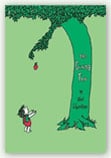Extinction of Rainforest Species Slows Future Growth

Rainforest conservationists estimate that between 0.2 and 0.3 percent of rainforest species are lost annually, assuming that 1 percent of the rainforest is being cut per year.
That might sound like a relatively small number, until you figure the vast number of species in the rainforest, many of which have yet to be identified. By these estimates, we’re losing some 4,000 to 6,000 species to rainforest destruction every 12 months.
In and of itself, this should be incredibly alarming.
Here at RainforestMaker, we recognize it as especially troubling in light of a recent study revealing the massive impact of the loss of a handful of larger mammal species, known as “mega fauna,” which went extinct some 10,000 years ago. Researchers with Oxford University say this loss created a lack of nutrient dispersal throughout the forests, which has significantly slowed forest regeneration.
Some history: 12,000 years ago, the Amazon rainforest was home to a host of large mammalian creatures. The sloths were the size of elephants. An armadillo-like creature, known as the glyptodon, was about the size of a Volkswagen Beetle. There was also a creature known as the toxodon, which resembled a rhinoceros in both size and physical features.
Scientists believe their rapid extinction is caused by a number of factors, including human overhunting and climate change.
In looking at the effect this had on the rainforest as a whole, Oxford researchers now say it is likely that the loss of those species had a profound impact on rainforest health. The reason? In a word: Poop.
When large creatures such as these roamed the rainforest, there was a wide dispersal of minerals, such as phosphorus, into the soil through the animals’ manure. This in turn led to a healthier forest, as the trees had a richer soil on which to thrive.
Today, minerals are carried to the soil of the rainforest floor from the Andes mountains through the Amazon River and its various streams. However, those minerals tend to collect in muddy soil at the very foot of the plains – and stay there.
Ten thousand years ago, when these larger animals roamed the forest, this was not a major problem, as these creatures, through their bowel movements, helped to disperse these nutrients over a much wider region, including areas that would have been relatively unfertile otherwise.
The loss of these creatures has meant that the rainforest’s ability to regenerate, particularly in the face of heavy deforestation, has been greatly diminished. Researchers say when these animals went extinct, nutrient dispersal in the Amazon rainforest was slashed by nearly 98 percent.
Man has significantly amplified the threat. In addition to deforestation, fertilizers used by farmers in the Amazon region also pose a threat to the soil nutrient content, as does the practice of keeping livestock in pens.
We don’t know for sure the exact impact of the loss of the species we continue to lose daily as a result of the assault on the forest. However, based on what these researchers have found, even the loss of a few larger species has had a profound impact on the delicate balance of the rainforest ecosystem.
That these losses are now occurring at a much more rapid rate is all the more reason why we must act now if we hope to preserve what is left.

